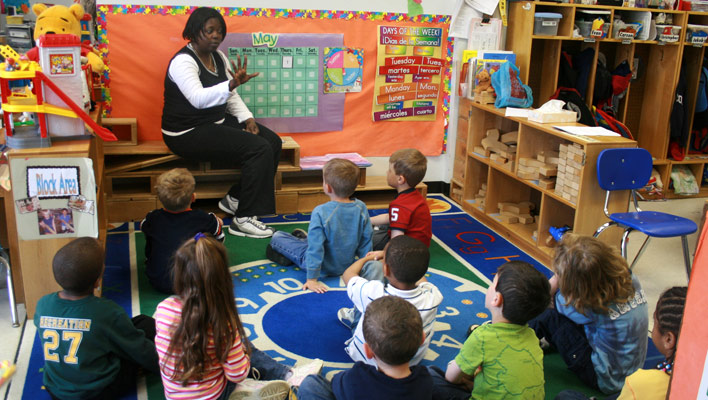
Unlocking Potential: Nurturing Young Minds in Early Childhood
Human beings are unique in that 90% of our human brain growth takes place outside the womb in the care of adults, almost all in the first three to five years of life. How is this most important period in an individual’s life reflected in our cultures, societies and educational systems?
“I will never be the artist I was as a child.” — Willa Cather
Birth through preschool (0–5 years) is the first optimal period for human development.
As humans, we are predisposed to learn from other members of our group, particularly at first from those who are older or of higher social status. Like our ape ancestors, we start life by imitating those with whom we have the closest bonds: our mothers and caregivers. Unlike apes, we want to know what others are thinking, to know what they know, and how they know it. That’s how we learn and thrive. In their book Social: Why Our Brains Are Wired to Connect, Matthew Lieberman and colleagues point out that we are all neurobiologically wired for social connection. Attachment to others is key to healthy development.
Education starts from the moment we are born, and it is a lifelong endeavor – we are always learning. But 90% of our brain growth takes place outside the womb, in the first three years of life. Unsurprisingly then, birth through preschool (0–5 years) is the first optimal period for human development. During this period, we are capable of learning and developing rapidly; we develop our senses, our motor skills, identify our group, develop our language and social behaviors. By age six, the brain is already 95% of its adult size. But the gray matter, or thinking part of the brain, continues to thicken throughout childhood as the synapses make extra connections in response to input from the world outside.
What’s Needed to Help All Children Reach Their Potential
It stands to reason, then, that quality child care and preschool experiences during these formative years would have a significant life-long effect for children, and benefit society as a whole. Research bears this out. A longitudinal study over 40 years found that the children enrolled in a quality preschool program experienced fewer teen pregnancies and were more likely to graduate from high school, have a high-paying job, and own their own home and car. A more recent long-term study of children at Chicago’s Child-Parent Centers revealed a 29% higher high school graduation rate and a 42% lower arrest rate for a violent offense than their peers. They reached a higher level of education by age 35 and were more likely to earn a post-secondary degree.
A longitudinal study over 40 years found that the children enrolled in a quality preschool program experienced fewer teen pregnancies and were more likely to graduate from high school, have a high-paying job, and own their own home and car.
In 2000, based on the growing understanding of the importance of a child’s first five years of development and mounting research on the positive impact of preschool, the National Research Council (NRC) conducted a major study of early childhood education in the U.S. In their final report, Eager to Learn: Educating our Preschoolers, the authors wrote: “As the twenty-first century begins, there can be little doubt that something approaching voluntary universal early childhood education, a feature of other wealthy industrialized nations, is also on the horizon here.” Moreover, they concluded, “the considerable lead by other developed countries in the provision of quality preschool programs suggests that it can, indeed, be done on a large scale.” Efforts would be required, the report concluded, in four key areas: professional development of teachers, knowledge-based teaching, public policy, and public education.
The National Institute for Early Education Research (NIEER) began tracking the progress of state-funded preschool in 2002. Their 2014 report noted, “Every state is capable of delivering high quality pre-K to all 4-year-olds within 10 years, if they set high standards and commit adequate resources. Many states could reach this goal in less than 10 years.”
Where We Stand
“At the nation’s current rate of growth, it would take 150 years to reach 75% enrollment, and much of that would not meet the quality benchmarks necessary to produce long-term benefits.”
Almost two decades after the NRC study, in spite of widespread bipartisan public support, we are still far short of providing quality preschool for all U.S. children. Programs are fragmented, operating under a variety of names and auspices including the federal Early Learning and Head Start programs, and private and public funded child-care. Both the number of children enrolled and the quality of teaching varies widely.
NIEER’s 2017 annual State of Preschool report indicates that progress is mixed at best, and alarmingly, overall per-child spending has actually decreased. A subsequent 2019 report by NIEER and CityHealth, Pre-K in American Cities, indicates that although more cities are stepping up, the national trend is disappointing: “[Less than] 25% of 4-year-olds and a very small percentage of 3-year-olds have access to high-quality pre-K. At the nation’s current rate of growth, it would take 150 years to reach 75% enrollment, and much of that would not meet the quality benchmarks necessary to produce long-term benefits.”
Measuring the Impact
Unfortunately, much of the current research and discussion about benefits of preschool focus on a relatively short term impact, specifically on children’s subsequent academic performance in elementary school. That performance, in turn, is defined by student scores on standardized tests. On that basis, some researchers point to a “fade out” effect: by third grade, students who went to preschool are doing no better than those who did not.
There are many issues with evaluating the value of preschool based on a few standardized test scores—and it is especially troubling if the practice of “teaching to the test” starts as early as age 3 or 4. In her book The Most Important Year: Pre-Kindergarten and the Future of Our Children, Suzanne Bouffard writes about the misguided practice of pressing pre-school children to rack up a certain number of “sight words” by the time they start kindergarten—instead of focusing on more foundational skills for learning to read such as context and comprehension.
“Research shows that third grade is a critical marker for reading skill, when children have to be solid enough readers that they can make a transition that educators often describe as moving ‘from learning to read to reading to learn.’ But in order to prepare children to meet that milestone, many schools have pushed reading instruction and assessments earlier and earlier. Some of that pressure comes from administrators and some of it comes from other teachers. Tracy Crosby, the director of early childhood for the Elizabeth, New Jersey, public schools, frequently fields phone calls from pre-K teachers complaining that kindergarten teachers blame them for their former students’ inability to read. When Crosby looked into the issue, she found that the kindergarten teachers were passing on pressure they were getting from the first-grade teachers, and so on and so on all the way up to third grade.”
Even considering “kindergarten readiness” as the purpose of preschool, says education professor Yong Zhao, is shortsighted. “The last time I checked, kindergarten was not a job. It’s the job of kindergarten to be ready for me, ready for my children.”
Basing the value of preschool on how well children do or do not “catch up” also reinforces the harmful tendency to stigmatize some children, especially children of poverty and immigrant children, as “damaged goods.” Says Lisa Delpit in Multiplication is for White People: Raising expectations for Other People’s Children, “When many look at low-income children of color in low-performing schools, they identify what the children don’t know—much of it the vocabulary, strategies, or conventions of middle-class life. None of the early school assessments look at what these children do know—how to make accurate judgments and evaluate real-life situations accurately and act accordingly.” The role of school, she says, is to help children build on the strengths and knowledge they have, and to help them acquire the skills and knowledge they need.
When children don’t receive healthy, nurturing impulses in early development, they adapt to those they do receive, with negative consequences for their futures.
It would be unfortunate if the so-called “fade out” effect is used as an excuse for not investing in quality state-funded preschool for all children. For poor families, and even many families with two working parents, a primary benefit of preschool is that it relieves one of their greatest sources of stress: finding reliable child care. As education writer Michelle Chen put it, “There are two things every parent knows about preschool: They can’t live without it, and they can’t afford it.” For children of poverty, quality state-funded preschool programs meet some of their most basic needs: a safe place to learn and grow in a dangerous neighborhood, the guarantee of nutritious meals, and basic medical services and screening.
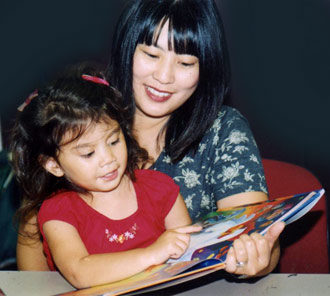
For all young people of any socio-economic background, care and education should go hand-in-hand. All children need cognitive and motor stimulation, rich language environments and social emotional support. Providing children with security and love improves their social and intellectual competence and gives them confidence to enjoy and take advantage of learning opportunities. When children don’t receive healthy, nurturing impulses in early development, they adapt to those they do receive, with negative consequences for their futures. Why would we not want to ensure the benefits of quality, enriching experiences for all our children in their most formative years?
Quality is Key
As the Pre-K in American Cities report says, “This chain of benefits from cradle to career and beyond generates economic benefits far exceeding cost, making Pre-K programs a strong public investment. However, programs that do not meet high quality standards don’t produce the same benefits.”
“The most crucial role teachers play is in the questions they ask and the dialogue they facilitate with children about what they are learning, how, and why.”
In its assessments, NIEER has defined benchmarks for ten features of effective programs, benchmarks covering development standards, curriculum supports, class size, and ongoing improvement. Notably, no fewer than four of the ten benchmarks have to do with the training and qualifications of teachers. Bouffard brings these features to life with many inspiring stories of innovative, effective preschools. About the renowned early childhood program of Reggio Emilia, a small city in northern Italy, she writes:
“The most crucial role teachers play is in the questions they ask and the dialogue they facilitate with children about what they are learning, how, and why. They are constantly challenging children to look at things from new angles, try original ways of doing things, and reflect on why, with questions like…‘How do you know?’ In those conversations, they use rich vocabulary and complex concepts about geometry, physics, art, and other topics. Children are never drilled on the alphabet or numbers; instead, they explore those concepts as they come up through rich, meaningful explorations.”
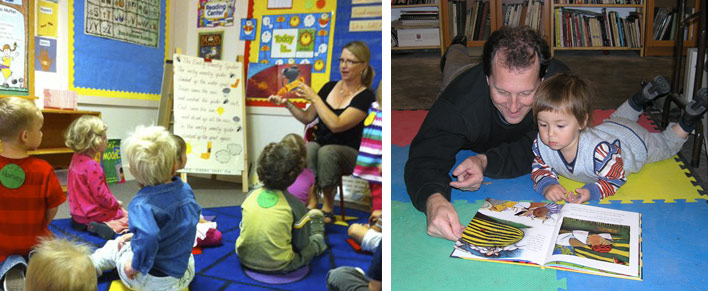
Historically, preschool educators have had little in the way of formal training requirements.
A beautiful example of such contextual learning is described by Washington D.C. preschool teacher Daniela Silver. When her class of 4- and 5-year olds encountered a massive tree that had fallen across the trail of a local park, they wrote notes to the tree with their questions and concerns. They left their notes, along with a packet of blank note cards and markers in a plastic bag on the tree, inviting passers-by to share what they knew about what happened. The response was amazing. In the process Silver was able to turn the experience into a learning opportunity for herself and her students that encompassed nature, writing, knowledge-sharing and community building.
Working at this level of understanding and intentionality requires caring, well-trained teachers who are valued, supported and regarded as professionals. But historically, preschool educators have had little in the way of formal training requirements. Low wages make it difficult to retain the most-qualified workers, who, once they earn degrees, often move into higher-paid K-12 jobs.
A joint report of the Institute of Medicine and National Research Council calls for all teachers of young children to have a four-year college degree and specialized training, adding that “States should create a timeline to ensure that all teachers in state-funded preschool programs obtain these qualifications and that their compensation is comparable to that for K-12 teachers with similar qualifications.”
Progress to Build On
In spite of the painfully slow movement toward universal preschool for U.S. children, the most recent NIEER reports cite many signs of hopeful progress:
- 16 states now serve more than a third of 4-year-olds, 10 states enrolled half or more, and 5 states surpassed 70% enrollment.
- States have made progress—albeit uneven—on adopting policies that support high-quality classroom practices. Three states (Alabama, Michigan, and Rhode Island) met all 10 of NIEER’s new benchmarks for minimum state preschool quality standards. These three programs have led on quality standards while also expanding enrollment.
Even as our political polarization becomes more extreme, solid support of early childhood education unites American voters.
- Six states have expressed the intention to provide universal pre-K. Three have largely achieved that goal—West Virginia, Vermont, and Wisconsin. Two are on their way up—Alabama and New York—both demonstrating how states can rapidly raise both quality and enrollment.
- The Pre-K in American Cities report released in January of 2019 awarded gold medals to five cities whose pre-K programs met 8 out of the 10 NIEER quality benchmarks and enrolled more than 30% of their children: Boston, Charlotte, Nashville, New York and San Antonio.
A 2017 First Five Years Fund poll showed that even as our political polarization becomes more extreme, solid support of early childhood education unites American voters. In fact, 89% of Trump voters and 79% of Clinton voters want congress and the administration to work together to improve preschool and make it more affordable for parents.
According to the Center for American Progress, 16 governors elected in the 2018 mid-term elections ran on platforms that included the expansion of early childhood education, as did many of their opponents. And two of those governors, Gavin Newsom of California and Kate Brown of Oregon ran on cradle-to-grave education platforms. “It is clear that early childhood policies appeal to voters. Now, it is time for elected leaders to follow through on their promises and lead on this issue.”
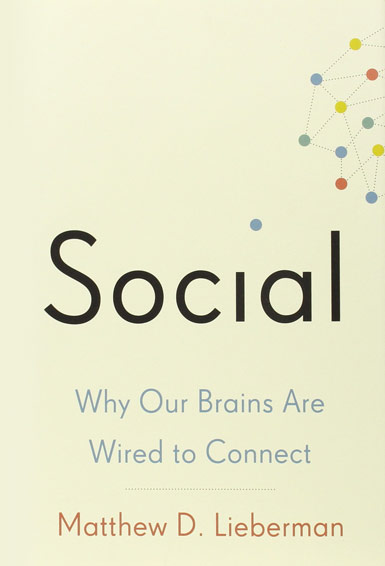
Social: Why Our Brains are Wired to Connect
Matthew D. Lieberman
Explore the groundbreaking research in social neuroscience revealing that our need to connect with other people is even more fundamental, more basic, than our need for food or shelter. Because of this, our brain uses its spare time to learn about the social world – other people and our relation to them.
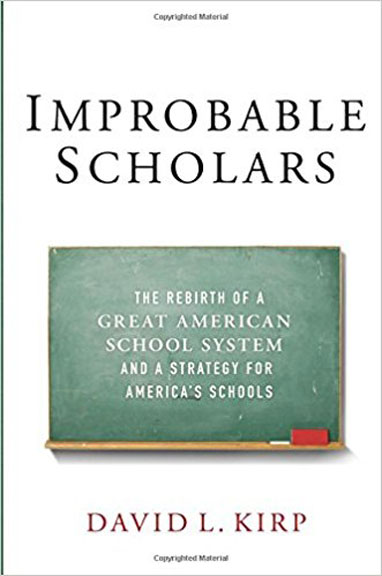
Improbable Scholars
The Rebirth of a Great American School System and a Strategy for America’s Schools
David L. Kirp
How do we determine if our schools are preparing students for a meaningful future in our society and improve the schools that are not living up to those standards? Explores the current crisis in American education and four districts that have made positive changes.

One World Schoolhouse
Education Reimagined
Salman Kahn
There may be a young girl in an African village with the potential to find a cancer cure. A fisherman’s son in New Guinea might have incredible insight into the health of the oceans. By combining the enlightened use of technology with the best teaching practices, we can foster students who are capable of self-directed learning, deep understanding of fundamentals, and creative approaches to real-world problems.

Beyond the Hole in the Wall
Discover the Power of Self-Organized Learning
Sugata Mitra
Sugata Mitra’s now famous experiments have shone light on the immense capacities that children have for learning in self-composed and self-regulated groups.
In the series: Education Yesterday and Today
Related articles:
Further Reading
External Stories and Videos

The State of Preschool 2017
The National Institute for Early Education Research
The latest state-by-state report card on progress in early childhood education.

Thinking Children Become Thinking Adults
Hoopoe Books
Uncover the world of oral and written storytelling from a time before formal schools, when stories were the way in which everyone learned universal lessons of empathy and tolerance.

Watch: Magic of Reading
Share Literacy
Programs that work: Over the past 16 years, Share Literacy has served over 690,000 disadvantaged children in the U.S. and other countries providing low cost books, training materials, and professional development services.
